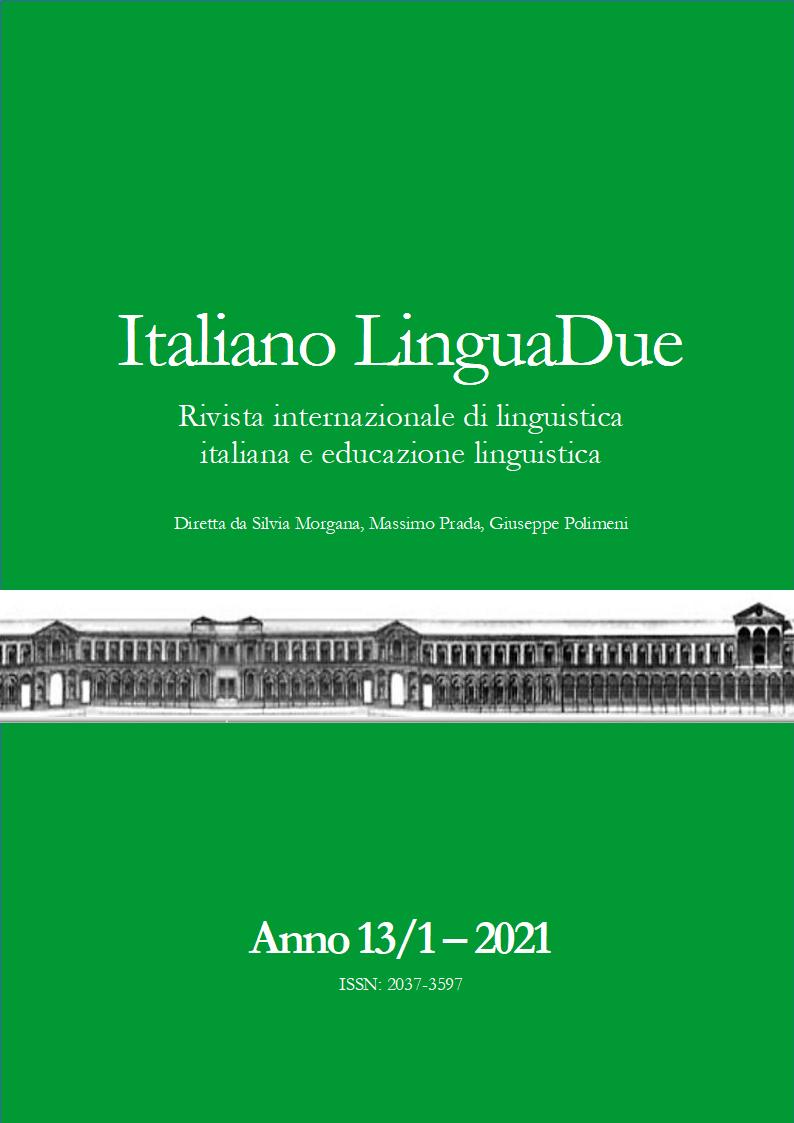FORMARE I DOCENTI DI LINGUA: È POSSIBILE CAPOVOLGERE LO SCHEMA?
DOI:
https://doi.org/10.13130/2037-3597/15851Abstract
La formazione in servizio degli insegnanti di lingue deve affrontare due questioni critiche: il modello basato sulle lezioni degli esperti si è dimostrato inefficiente nel garantire un aumento significativo dei risultati degli studenti; eppure, la domanda di formazione è in aumento da anni, l’offerta no. Questo saggio suggerisce la possibilità di far fronte alle due questioni di cui sopra capovolgendo il modello tradizionale di formazione degli insegnanti. Il modello tradizionale è lineare, ha una sola direzione, da chi sa a chi non sa o sa meno; il modello capovolto è circolare, cioè si basa su due cerchi. Cerchio 1: il punto di partenza è una scuola (o una rete di scuole, o un’associazione di insegnanti, ecc.) dove un insegnante, formato per essere un tutor, organizza la formazione. In primo luogo, i tirocinanti condividono la loro esperienza sul tema del modulo di formazione, poi il tutor fornisce input scientifici attraverso video, e infine guida la creazione e la sperimentazione di materiali didattici da utilizzare a scuola, completando così il cerchio 1, “da scuola a scuola”. Il cerchio 2 riguarda l’interazione tra il tutor e la ricerca in linguistica didattica. Il cerchio inizia quando un buon insegnante contatta dipartimenti universitari, centri di ricerca e simili, per essere formato; il centro di ricerca fornisce video lezioni da utilizzare nel cerchio 1; il feedback del tutor, insieme ai suoi articoli su riviste per insegnanti e alle domande di ricerca per ulteriori ricerche, completa il cerchio 2, ‘dalla ricerca alla ricerca’. Sono descritti cinque progetti di formazione circolare.
Training language teachers: is it possible to flip the pattern?
In-service training for language teachers faces two critical issues: the model based on expert instruction has proven ineffective in ensuring significant increases in student achievement; yet, the demand for training has been increasing for years, the supply has not. This essay suggests the possibility of addressing the above two issues by flipping the traditional teacher training model. The traditional model is linear, having only one direction, from those who know to those who do not know or know less; the flipped model is circular, that is, it is based on two circles. Circle 1: The starting point is a school (or a network of schools, or a teachers’ association, etc.) where a teacher, trained to be a mentor, organizes the training. First, the trainees share their experience on the topic of the training module, then the tutor provides scientific input through videos, and finally guides the creation and testing of teaching materials to be used at school, thus completing Circle 1, “school to school”. Circle 2 is about the interaction between the tutor and research in educational linguistics. The circle begins when a good tutor contacts university departments, research centers, etc., to be trained; the research center provides video lessons for use in Circle 1; the tutor’s feedback, along with his or her articles in teacher journals and research questions for further research, completes Circle 2, ‘from research to research’. Five circle training projects are described.
Dowloads
Pubblicato
Versioni
- 2021-07-20 (3)
- 2021-07-20 (2)
- 2021-07-05 (1)




